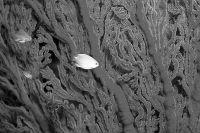The kingdoms of GAIA
2001/09/16 Imaz Amiano, Eneko - Elhuyar Zientziaren Komunikazioa
‘The atmosphere of the planet and, in short, the climate is the result of competition between plants and animals’. Is it not a striking idea? However, animals breathe oxygen and expel carbon dioxide, while the plants inhale carbon dioxide and emit oxygen. And we know that the amount of carbon dioxide affects the clima.Earth, the atmosphere and its 'components' are interrelated and considered complementary. But there is also rivalry between them. For example, it can be said that plants and herbivores live in a fight, but there are also those who say that this competition affects the climate and, therefore, the greenhouse effect. Many scientists have nothing clear that this idea is so.
The climate at the reach of plants and animals
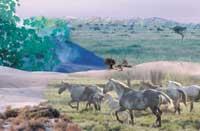
Carbon dioxide is one of the greenhouse gases from which there is not much room to say that animals heat the planet and that plants cool. If one of them is imposed on the other, the planet is heated or immersed in the glaciation.
Over the years, volcanoes and the erosion of stones have been considered guilty of any atmospheric incident, and it has been considered that animals and plants lived in ‘harmony’ feeding one another.
This dominant idea is basically geological. Volcanoes emit CO2 gas and after several processes, carbon ends up being stored in ocean bottoms. According to this theory, oxygen remains in the atmosphere in equilibrium between emissions and accumulation, and any low imbalance can cause climate change.
The geologist Greg Retallack of the University of Oregon, however, does not see balance between animal and vegetable respiration. What has conditioned the chemistry and temperature of the atmosphere since the first animated was born is this imbalance. In short, that living beings have a more obvious influence than was thought of in the atmosphere of our planet.
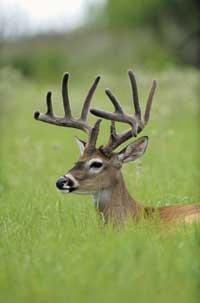
In theory it is also said that living beings somehow influence the atmosphere, fixing its chemical composition and making life possible on Earth. Studies of fossils and sediments indicate that in the past the atmospheric temperature and levels of CO2 and O2 have undergone variations. These respiratory vicissitudes of the planet are imputed by Retallack to the ‘conflict’ between living beings.
The first proof of this conviction came in the late 1950s. In the extinct volcano Mauna Loa it was observed that throughout the year the levels of CO2 varied around 2%. The researchers agree that the changes are due to living beings on the slope, which coincide with the cycles of penetration and emission of CO2 of living beings. Plants and other living beings that grow through photosynthesis absorb CO2 from the air, mainly in spring.
But in autumn and winter, photosynthesis is largely interrupted and photosynthesizers are fed by bacteria, fungi and terrestrial animals. These CO2 emissions make the atmosphere level rise again.
New History of the Earth
Since Retallack’s ‘biopunto of sight’, history began more than 500 million years ago. Although the Sun was weaker than today, the Earth was more temperate due to the abundance of greenhouse gases. The CO2 level was 20 times higher and living beings were in a wonderful ‘spring party’ in the Cambrian. The earth was filled with ‘respirators’ emitting CO2 into the air. But the party did not last, since between 450-350 million years ago CO2 levels were drastically reduced.
What happened? For Retallack came the ‘revenge’ of the plants. This is when, for the first time, plants with wood are created. Creation of trees.
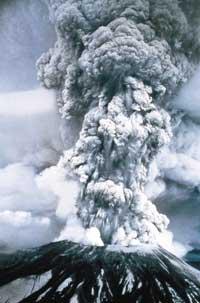
There were more and more plants all over the planet and the great increase in photosynthesis absorbed CO2 from the air. Angry respirators could do nothing because they were not able to digest the wood. On that Earth, which probably had a lower CO2 level than the current one, ice layers were formed in the south pole. Wetland forests liberated carbon from the atmosphere enormously by creating peatlands and coal deposits. To date, the carbon of these coal deposits has not been returned to the air. It is currently being emitted due to the use of fossil fuels.
The animals evolved and responded to the proliferation of plants. The heroes were termites and dinosaurs, who invented how to eat wood and proliferated. The animals were again imposed for about 200 million years. They ate a lot of plants, until the air CO2 increased considerably. And the warm, humid, tropical climate became most of the planet; the greenhouse effect was returned.
But 65 million years ago, after the disappearance of the dinosaurs, the era of the plants returns. The novelty was the appearance of meadows. The grass itself does not have much CO2, but it creates under a layer of soil rich in organic matter and therefore abundant in carbon.
In the last 40 million years, there have been a large number of high grass meadows in the world, as well as in many places that had previously been forests. This ecosystem controlled the thermostat of the planet. New herbivorous animals also emerged to live in the meadows. And "the coevolution of the meadows and herbivores originated a carbon environment more scarce than ever," says Retallack.
The cooling of the Earth by the influence of the grasslands seems to indicate that, for 5 million years, the glacial cycle began. Many researchers do not agree that this is a consequence of the conflict between plants and animals.
The glaciations reached approximately every 100,000 years. According to the most accepted theory, this is a consequence of the Earth's tilt change. Retallack, in his research, has discovered that as the ice was going and coming, the wet meadows became dry scrub and vice versa. In wet times the lands are formed by gusano excrements. In dry times they usually have chicharro holes. For Retallack, this means that the carbon economy of these lands is related to the global level of CO2.
From the most accepted point of view, the change of fauna is a response to climate change. But Retallack believes there is another explanation: ecosystems are the ones that affect glaciations, the carbon entry to the ground when the meadows dominate and the liberation to the air predominate the bushes.
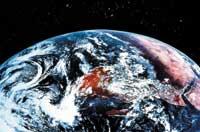
The idea of Retallack has not convinced geologists, who, in short, are used to seeing their area as a guide to the planet's environment. It is also difficult to convince supporters of the issue. For example, for Lee Klinger of the National Center for Atmospheric Research in Boulder, things are not as simple as Retallack says: "Nor does it mention the oceanic biota with influence on CO2.
Nor does it take into account the changes in peatlands, despite having the same carbon or double as the forests or meadows of the same surface". Lovelock sees another void: "He has forgotten Gaia's 'piece'. Methane had a great importance in the health of the starting atmosphere and still has an important role."
But both believe that Retallack must go ahead with his idea. In his opinion, the changes in living things are not a consequence of climate change, but cause.
The Spirit of Topic Theory‘GAIA, a new look at life on Earth’ J. R. R. It is a book published by Lovelock in 1979. And besides being a book, Gaia is also the name of a theory which is proposed in it. The theory that explores Earth as a living being that controls itself, has generated several debates. However, it has served to see that on Earth all things are related to each other and that whatever is done or passed has a certain influence on everything else. We have taken from the second edition of the book two parts that serve to understand the spirit of Gaia theory. "The idea that the Earth we live on is ancient. The theme refers to living beings and was used by the Greeks 2,000 years ago. The first scientific statement on the existence of the Earth was made by James Hutton at a conference held in 1785 at the Royal Edinburgh Society. He also thought that Earth's research should be done from the physiological point of view; he also made a comparison between the discovery of Harvey's blood circulation and the cycle of elements." The concept of Mother Earth, or Gaia, which the Greeks named long ago, has been used on many occasions in history and remains the basis of beliefs that continue to accompany the great religions. The accumulation of environmental data and the growth of ecology as a science have led to a debate on whether the biosphere is more than a mere collection of lands, seas and air than the land, sea, and land in which they live. These ancestral beliefs and current knowledge have joined together excited, encouraged by the respect that, with the help of astronauts, has generated us to see in the dark space the brilliant beauty of the Earth. But this feeling, despite its solidity, does not show that Mother Earth is alive. This conviction, like religious belief, is scientifically unstable and therefore could not stand a rational and profound examination." |
Published in the supplement Natura de Gara.

Gai honi buruzko eduki gehiago
Elhuyarrek garatutako teknologia




